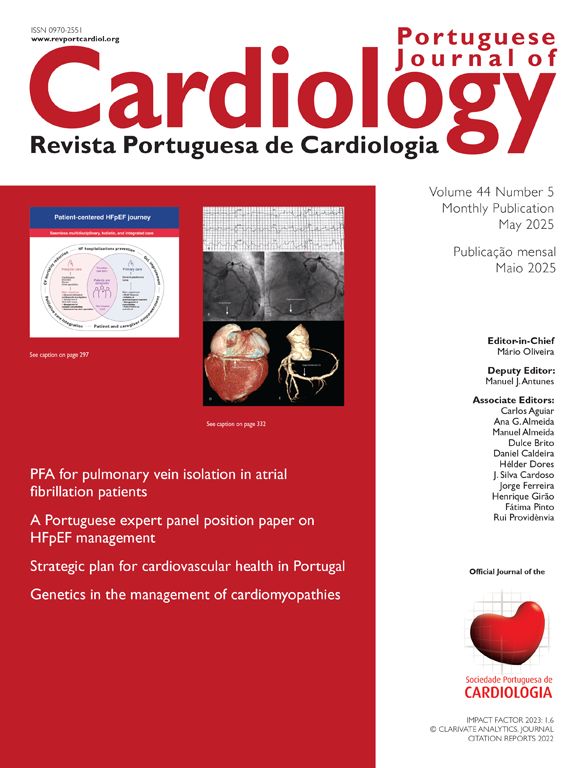Stanford type A aortic dissection (TAAD) is still one of the emergency conditions with the worst immediate prognosis. In the past, up to 50% mortality was reported in the first two days. More recent series state that a significant number of patients are unable to reach the hospital alive, and in the first 48h after medical care, a patient dies every 2h.1,2 Aortic dissection has many chameleons, such as acute myocardial infarction, pleuro/pulmonary and/or gastroesophageal disease, making its differential diagnosis challenging, especially in the context of emergency services.2 TAAD often requires emergent surgical treatment to correct, at the very least, the entry point of the ascending aorta, reducing false lumen pressure and thus preventing cardiac complications (such as tamponade, myocardial infarction, acute aortic insufficiency) and, at the same time, promote better organ perfusion at a distance.3
Even today, there are reports of mortality ranging between 7% and 40% in surgically treated patients, mostly due to immediate complications related to poor organ perfusion, in which extensive strokes and/or mesenteric ischemia stand out.3,4
A less studied and generally more neglected clinical condition is TAAD-associated lung dysfunction. Before emergent surgery for aortic dissection, between 46 and 55% of patients already have hypoxemia, which is not explained by a cardiac condition.5 Even considering age and other comorbidities, the incidence of respiratory complications is much higher than anticipated.6 Furthermore, if the development of acute respiratory distress syndrome (ARDS) is relatively common after cardiac surgery, with series revealing around 8% after valve surgery, the development of ARDS after aortic surgery is even higher, reaching 20% in several series. AS surgery is performed in an emergency context, this further increases the risk of respiratory complications.7
Post-surgery ARDS is associated with longer mechanical ventilation time, longer intensive care stay, and higher early mortality.2 After dissection, the intima of the artery is torn, and a large amount of the extracellular matrix is exposed to the blood circulation, which causes the release of several inflammatory mediators, causing pulmonary capillary bed destruction and pulmonary interstitial edema.6,8 Consequently there is a reduction in the ability to perform gas exchanges, and a diffuse pulmonary infiltrate arises on radiographs, typical in this condition.4,9
In the study by Liu et al.,10 a cohort of 142 patients who underwent surgical correction of TAAD was evaluated for predictors of ARDS after surgery. They had the merit of being one of the first studies developing and proposing a nomogram to predict the risk of ARDS after this condition. This tool uses four simple variables. The most prevalent risk factors found in their series were: body mass index (BMI), procalcitonin level, extracorporeal circulation time and hypoalbuminemia.
Why is this clinically relevant? TAAD is already associated with such high morbidity and mortality that it would be important to be able to prevent other complications, such as acute lung injury or even ARDS to improve patient prognosis.
As it is retrospective, the study by Liu et al.10 cannot provide effective clues for preventive measures. Some of these risk factors are nonmodifiable, such as BMI in an emerging context. But it would make sense to understand whether drugs with anti-inflammatory properties or low steroid doses could change the course of this condition. Numerous agents have been studied to control the inflammatory response and appear promising, but their complete efficacy has never been proven in larger scale studies; they also have not been introduced to routine clinical practice.2 Another research area would be whether pre-operative albumin administration could influence the evolution of the disease.
Other studies have related the development of ARDS after TAAD to the use of a higher number of blood products for transfusion perioperatively, hypervolemia, pre-operative leukocytosis, hypotension, IL6 and prostaglandin elevation.5,6
Although there is still no global consensus, and research still needs to be carried out, the risk factors point globally to obesity (and the associated metabolic syndrome), generalized pro-inflammatory state and other conditions that are generally related to lung injury such as lung injury transfusion-related acute lung injury or hypervolemia.
It would be desirable to have larger studies, with a higher number of patients involving multiple centers. This nomogram developed by Liu et al. may help us to understand on which patients we should focus. Some areas of interest would be to discover the effect of anti-inflammatory therapies, blood volume control, blood products transfusion reduction, more careful surgical techniques, use of system cell-salvage and/or others.
Conflicts of interestThe author has no conflicts of interest to declare.



